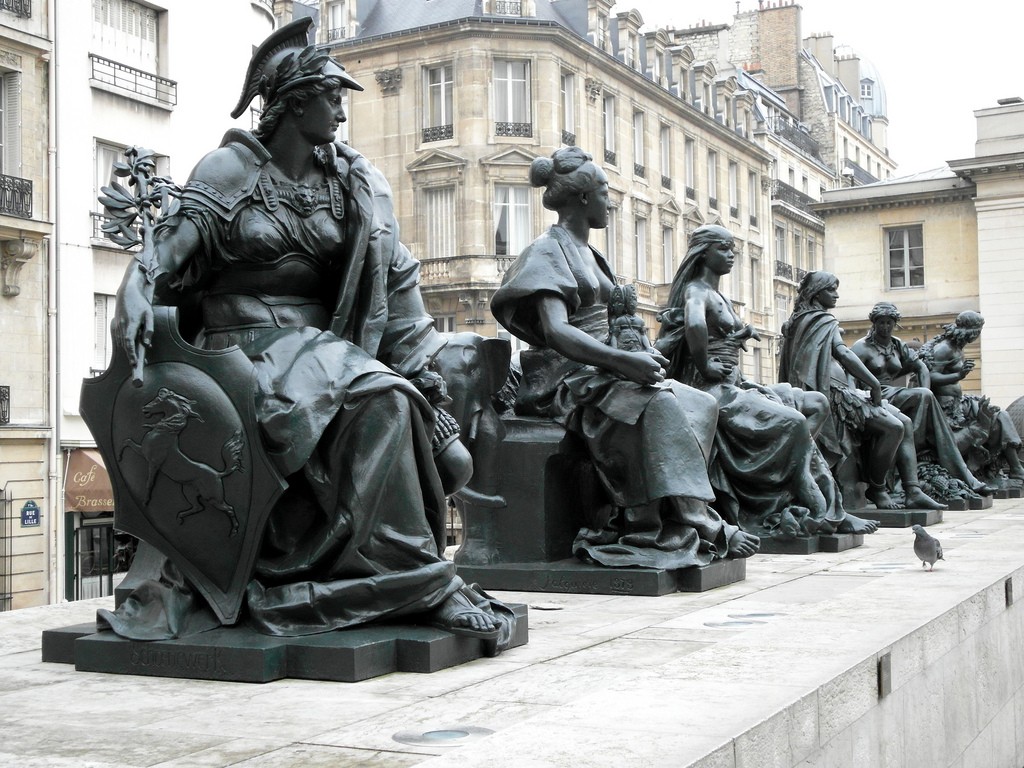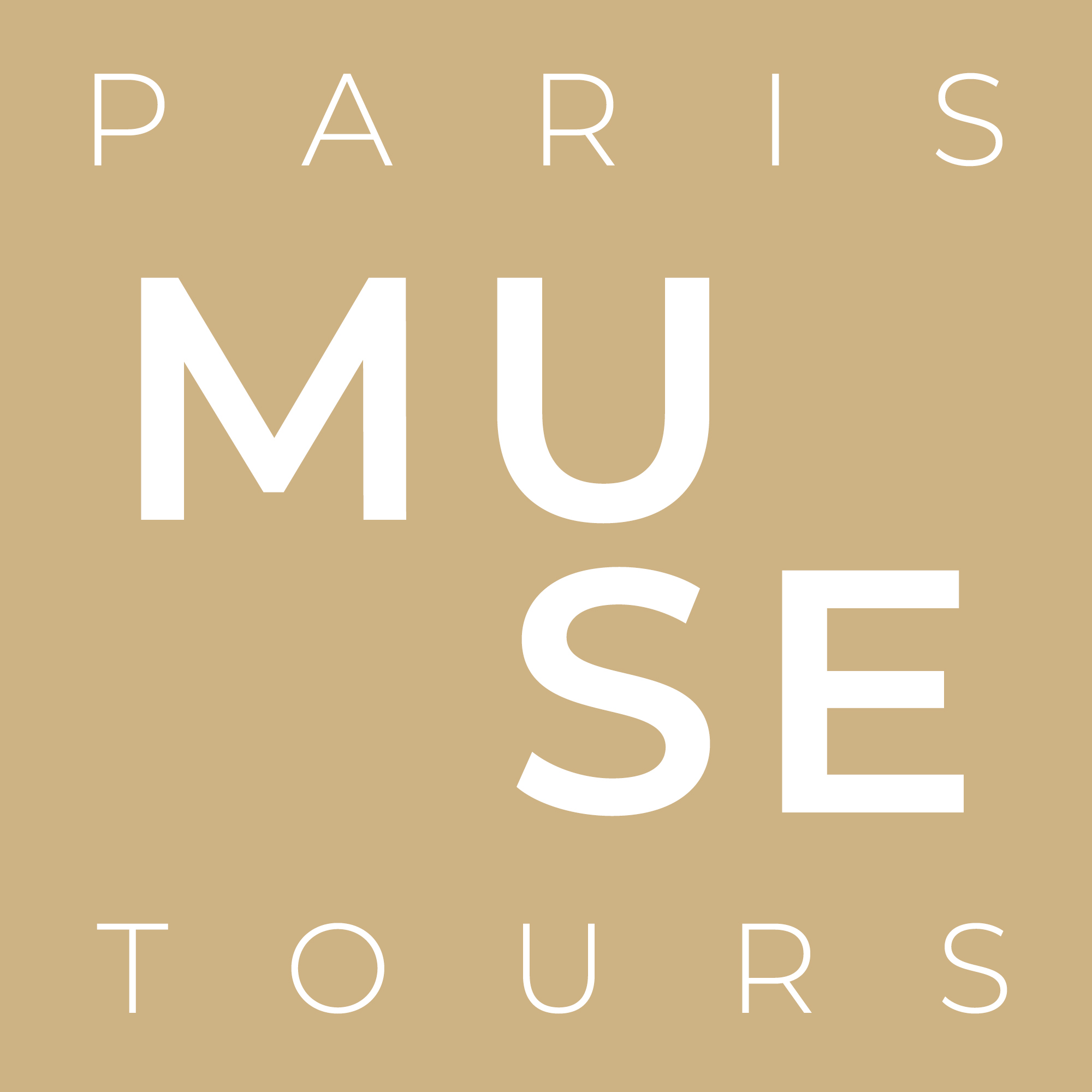Our guides share their outdoor art favorites–no admission required!
We asked our guides for the murals, statues, and other artistic installations around the city that inspire them most — and make Paris such a joy to visit.
MELISSA ANDERSON
Le mur des je t’aime (I love you: the wall)
Frédéric Baron and Claire Kito
2000
Located in Jehan Rictus Square
Metro: Abbesses
One of the reasons I am thrilled to lead our Montmartre: Mount of Marvels walking tour is that this neighborhood is full of hidden charms, like this enormous blue mural featuring the words “I love you” 311 times in 250 languages. Scattered among the graceful calligraphy are broken red fragments representing a heart divided by linguistic differences. But while most walls divide, this one seeks to bring people together. Don’t miss this outdoor piece located in Jehan Rictus square just steps from the Abbesses metro. How many languages can you identify?
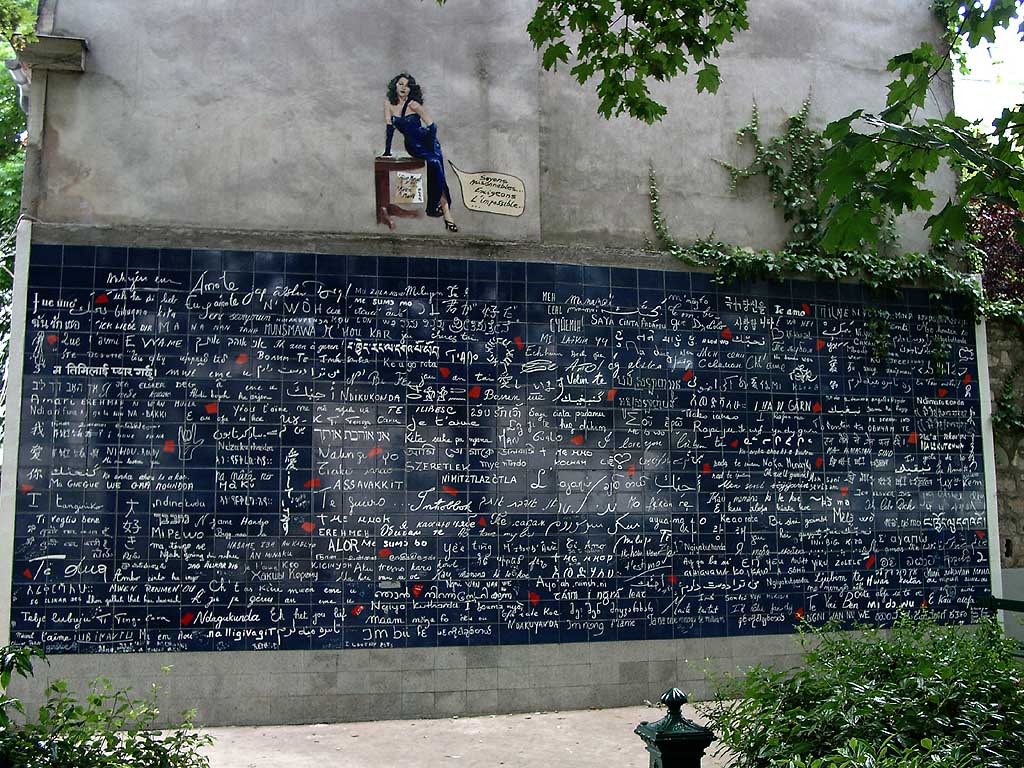
KRISTEN LAASKO
L’Ecoute
Henri de Miller
1986
Located in Nelson Mandela Park in front of St. Eustache church
Metro: Les Halles
My girls and I will always remember playing on this giant head with its ear to the ground, as if it were listening to the heartbeat of the city. It is my favorite piece of outdoor art because it was where I first introduced my kids to the idea of interacting with art. This wonderfully modern piece is in front of St. Eustache, an enormous 16th century gothic church. What I love about Paris is that we get to physically experience and interact with art from vastly different time periods in the same space.
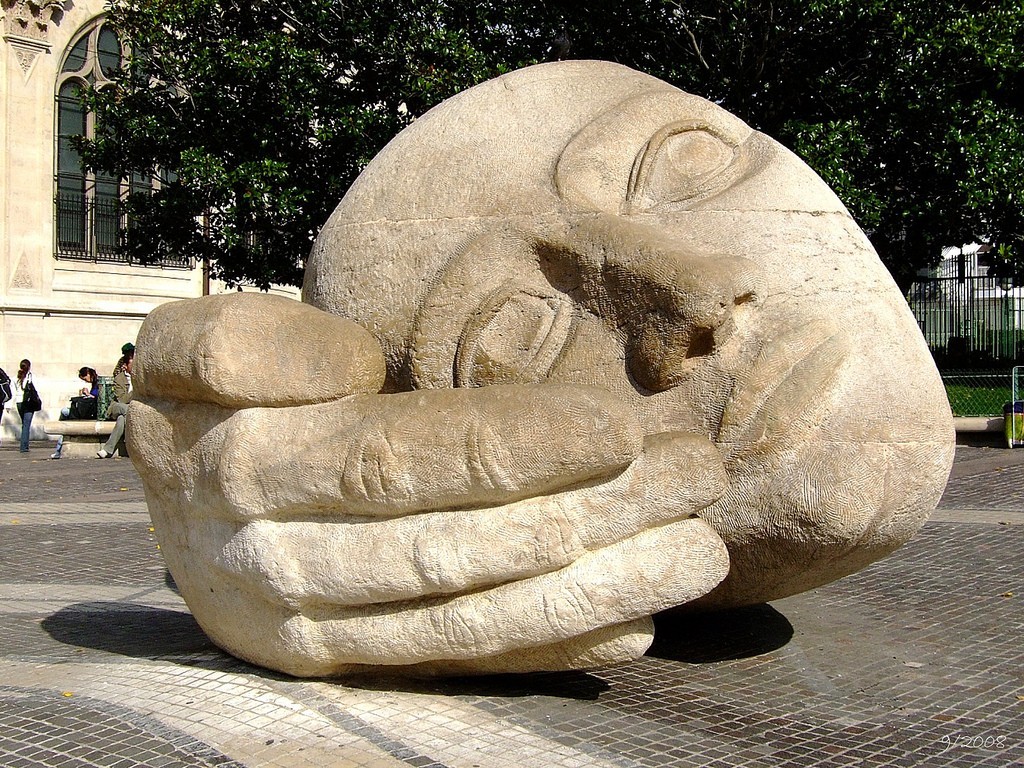
RACHEL HELFAND
Fontaine Molière
Headed by architect Louis Visconti
1844
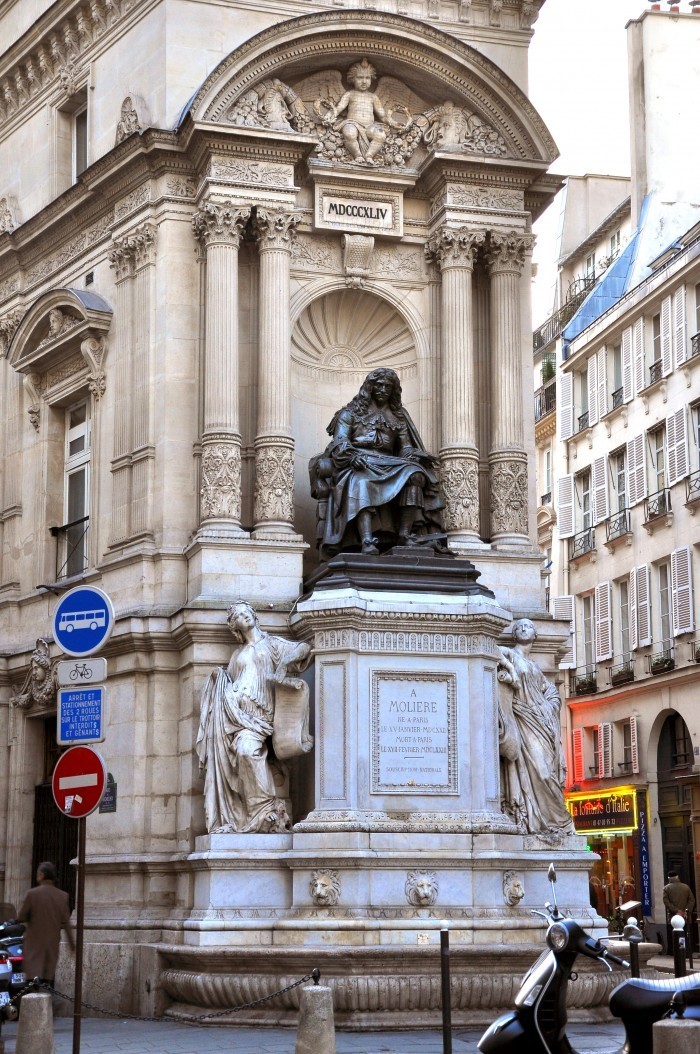 Located at the junction of the rue Molière and the rue de Richelieu
Located at the junction of the rue Molière and the rue de Richelieu
Metro: Pyramides
Paris is a very manageable city and one can get around easily by bicycle. I live in the 9th arrondissement directly north of the Louvre, and cycling to the museum is by far my preferred method of transportation, and not only because it’s a downhill ride! An added bonus is riding past the great bronze statue of the playwright Molière perched high up on a fountain. This was France’s first public commemorative monument dedicated to a non-military figure. I’ve probably ridden past Monsieur Molière a thousand times, but he still gives me a small thrill.
CHARLES KANG
The Welcoming Hands
Louise Bourgeois
1996
Located in the Tuileries Gardens, near the Jeu de Paume
Metro: Concorde
The Tuileries Garden, one of the oldest public gardens in Paris, impresses visitors with its orderly design along the city’s historical axis, but also with numerous outdoor sculptures . One of my favorites is “The Welcoming Hands”, which consists of five sets of bronze hands and arms on rough-hewn granite pedestals. Located near the northwestern corner of the garden, these delicate hands and arms strike the viewer with equal measures of intimacy and the grotesque. I also appreciate the historical reference that the sculpture as a whole makes to its surroundings–it looks out at the famous Place de la Concorde, forever associated with the guillotine since the French Revolution. Stop by before heading over to the Louvre for one of our many Louvre tours.
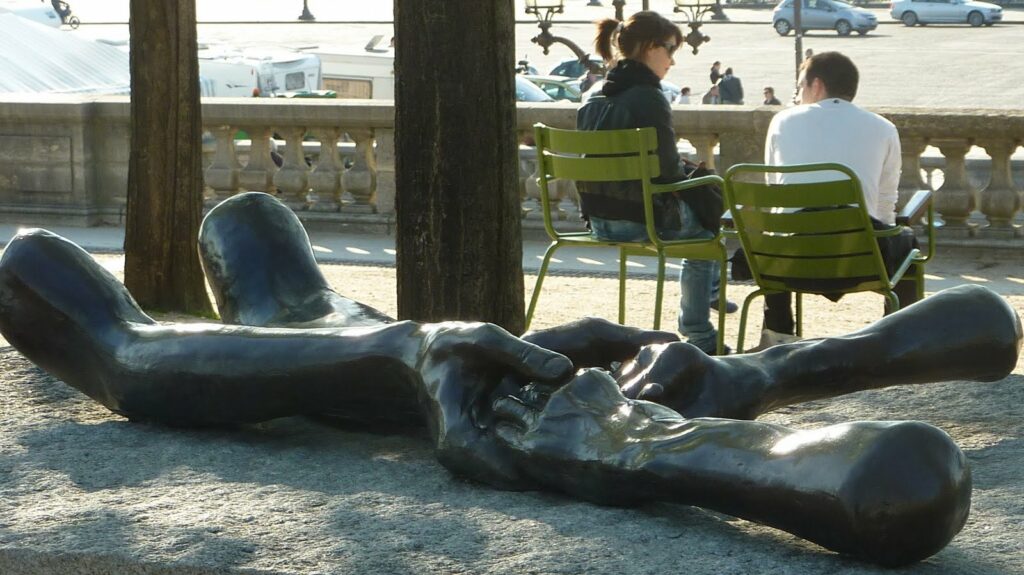
JOCK MAITLAND
A vous de jouer (Play Me, I’m Yours)
SNCF
2013-present
Located in Paris train stations
Metro: Gare de l’Est, Gare du Nord, Gare de Lyon
There are many situations in an urban society where a group of people share the same space and perform the same activity but have no interaction of any kind, a prime example of this being the tedium of waiting for a train. It’s always seemed a shame to me that people wait as individuals rather than benefiting from the small community which they temporarily form. That is why I love the SNCF’s ‘A vous de Jouer’ program, installing pianos in the major railway stations across the country. Inspired by the project ‘Play me I’m yours’ by the English artist Luke Jerram, the pianos are there for all to use, providing a catalyst for interaction. It’s a joy to spend time not just listening to the music, but to see the effect it has on the crowd and the sense of community it can bring to otherwise isolated individuals.

VANESSA LINCOLN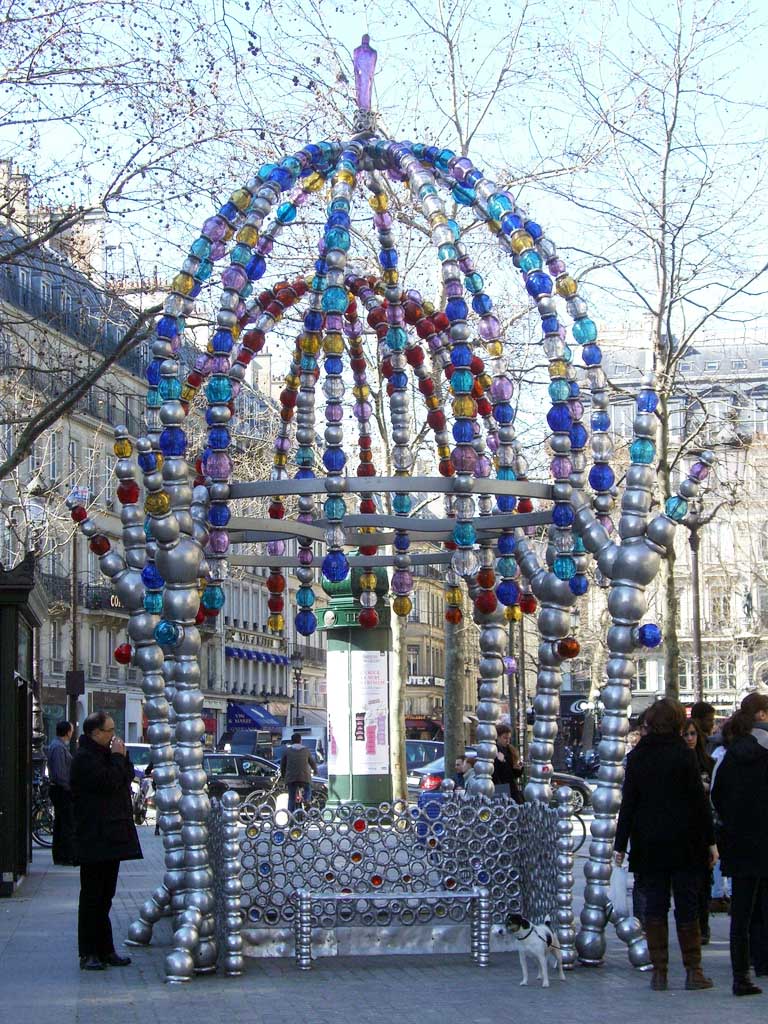
The Palais Royal
Located behind the Comédie-Française theater
Metro: Louvre-Palais Royal
My favorite place for outdoor art and architecture in Paris is the Palais Royal. The visitor is first met by Jean-Michel Othoniel’s fanciful metro station at Place Colette, decorated by colorful glass beads and aluminum, and then by Daniel Buren’s Les Deux Plateaux (pictured at top), a grid of striped black-and-white columns, echoing the columned arcades you find inside the Palais Royal itself. The gardens of this former royal residence are a beautiful and calm place to relax or picnic with friends in what is otherwise a very busy area of the city. Experience the Palais Royal on our French Revolution: A Murder Mystery walk.
KAREN RALPH
The Six Continents
Alexandre Schoenewerk, Alexandre Falguiere, Eugene Delaplanche, Ernest Eugene Hiolle, Aime Millet and Mathurin Moreau
1878
Located in: the Musée d’Orsay square, just before the main entrance
Metro: Musée d’Orsay
I am always interested in the reception of a work of art and how paintings and sculptures can fall in and out of fashion. A perfect example of this is the allegory of the Six Continents just outside the Musée d’Orsay. Originally commissioned for the World’s Fair of 1878, these six figures are accompanied by symbols of their continent: North America for example sits in native dress holding a plaque bearing the names of the founding fathers while an elephant peeps out from behind Asia. Tides changed however when the figures found themselves unwanted and homeless in a landfill before regaining their glory once again outside the Orsay. Before visiting Monet and Degas, stop for a moment at the Six Continents and remember that it was not always smooth sailing for Impressionist works either. Visit these massive sculptures before or after our Age of the Impressionists at the Orsay tour.
